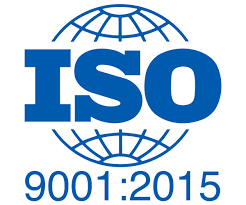
Developed by the International Organization for Standardization (ISO), ISO 9001:2015 is an international standard that establishes the criteria for an effective quality management system (QMS). This standard is designed to be generic enough to apply across varied industries while being thorough enough to control an organization’s processes, improving efficiency and ensuring consistent outputs. The overarching objective of ISO 9001 is continual improvement: setting quality-centered goals and then exceeding them. By striving to continually improve, we can provide the best possible products and services and satisfy both our employees and our clients.
ISO 9001’s comprehensive process-oriented approach ensures that the structure, responsibilities, and procedures of the QMS are controlled at each step and every level: from the quality manual, the central document that governs the requirements of the QMS, to a set of instructions for, say, calibrating an instrument. Under our ISO 9001 QMS’s well-defined and documented procedures, we improve the consistency of our output, constantly measure quality, provide detailed instructions for all employees to follow, decrease defect rates, and identify obsolete or inefficient practices and subsequently update them.
Risks and problematic practices are identified through ISO 9001’s Plan-Do-Check-Act methodology:
- Plan: We assess and account for the organization and its context, customer requirements, and the needs and expectations of relevant interested parties.
- Do: We do what we actually do – so, at KC, we design a bridge, or a treatment plant, or a roadway.
- Check: We analyze and evaluate our performance.
- Act: We factor our evaluation back into our planning, thus improving the process for future projects.
Under ISO 9001, management is responsible for implementing the system, including the allocation of resources and initiation of corrective actions to address risks and opportunities. However, all employees are responsible for understanding their individual roles and following the procedures and instructions in which they’ve been trained. This distribution of responsibility creates satisfied clients and employees and ensures products are of the highest quality. By focusing on satisfaction and quality, we can boost our performance and secure financial benefits through a higher rate of growth, increased wages, reduced waste, enhanced productivity, and improved health and safety performance.


